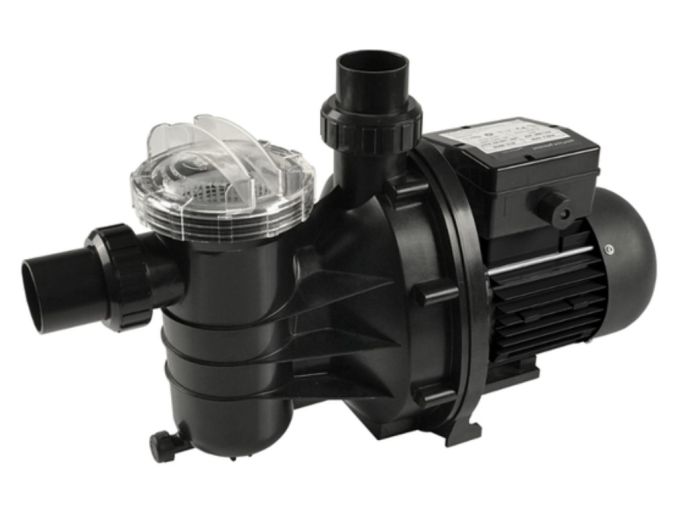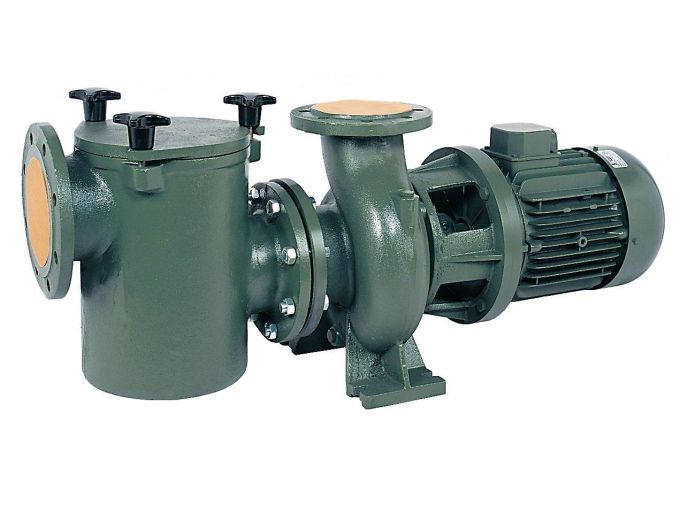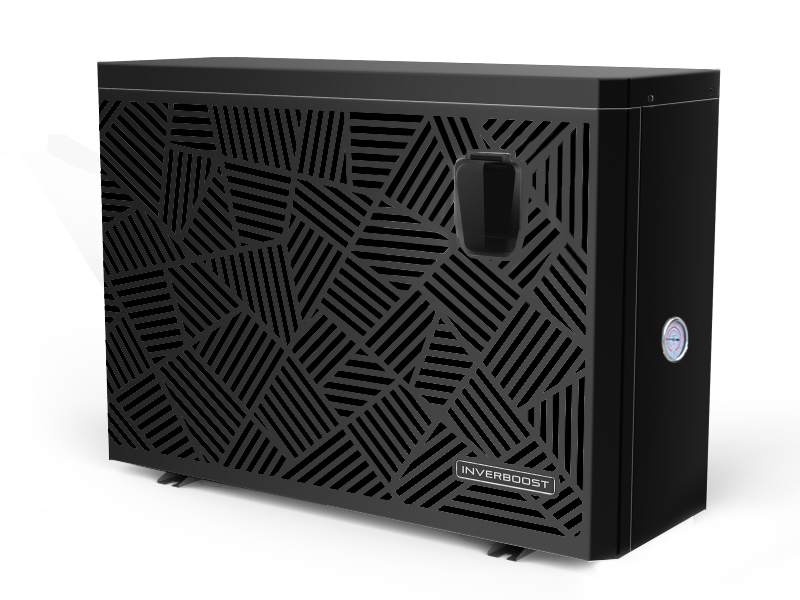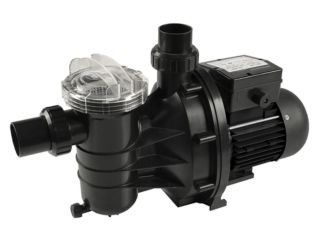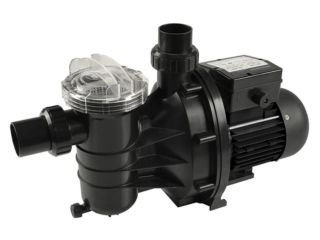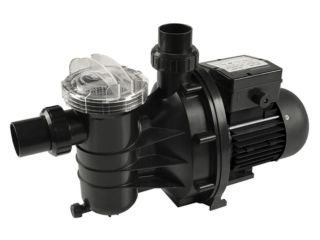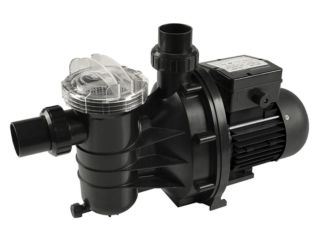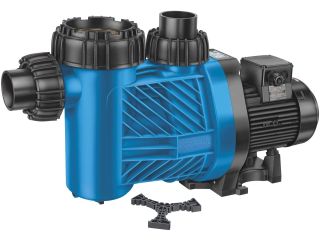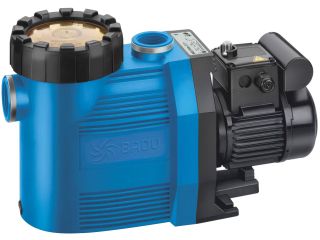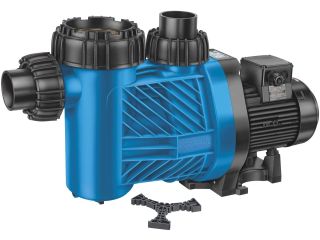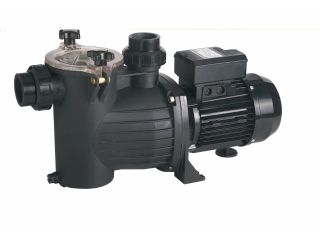Pumps
Pool circulation pumps are an essential part of every pool that has a filter circuit. Ensure perfect pool water circulation by using the correct pool pump.
Pool pumps
The circulation pump is a basic pool technology element. The main function is the swimming pool's water circulation. It's installed in the filter circuit in front of the filter container itself. It ensures that the water supply is pumped to and drained from the pool. Pumps come with a removable basket, which is used to catch small solid bodies and dirt. To keep the pool water crystal clear, it must be filtered 4 times a day. We offer filter pumps for all pool sizes.
- Filtration keeps the water clean and hygienic
- Installation in the filter circuit in front of the filter container itself
- Equipped with a removable basket to catch small solid bodies and dirt
- Also suitable for salt water treatment swimming pools
Pool pump installation:
If you're using a pool pump, install it between the separator and the filter. Bear in mind that it's very important to place the pump on a level, solid foundation. The pump needs to be screwed to the base (with the appropriate screws). The pump must be positioned so that the shaft is in a horizontal position and the pre-filter cover is at the top. However, the transparent cover, where the pre-filter basket is located, must be accessible and cleaned from time to time.
The suction pipe should be at least the same diameter as the pump suction. To reduce self-priming time, always use a straight and short intake pipe with a constant slope. If the suction pipe's length exceeds 10 metres, you must take pressure loss into account. Pipes must be assembled in a way that prevents leaks into the internal environment. The pipes must be installed so that any pressure fluctuations caused by temperature changes do not affect the pool pump.
Plastic pipes and joints must have a watertight connection. If you want to use a suction hose, it needs to be non-compressible (with spiral reinforcement). It's necessary to keep the suction pipe/hose as short as possible in order to ensure optimal working conditions. We recommend installing shut-off valves at both ends to isolate the pump.
The pump is unable to operate with the discharge valve closed. If this were the case, there could be a rise in temperature and the subsequent generation of steam which could cause serious damage to the pump.
If you can't rule out the possibility that the pool pump operates with the drain valve closed, one bypass/sludge valve must be connected to the drain line. This ensures a minimum flow through the pump.
To minimise possible noise, we recommend installing a so-called vibration damper. This is installed in both the suction and discharge inlets and between the base plate and the pump.
There is a fan on the side of the pool pump motor that cools the pump motor. However, it's still necessary to install the pump in a well-ventilated place protected from possible freezing.
- If the pump is installed outside, then it must be protected by a suitable cover.
- If the pump is installed in a shaft, then it's necessary to ensure sufficient air supply to avoid motor damage due to insufficient ventilation (internal temperature must not exceed 50 °C).
Electrical installation of swimming pool pumps:
Make sure that the electrical supply is always disconnected before removing the connection box cover, or handling and dismantling the pump. Electrical installation must be professionally carried out in accordance with local standards.
- The pool pump must be connected to a circuit breaker with a nominal residual working current no higher than 30 mA.
- The pool pump must be connected to an external switch.
- Voltage and frequency are indicated on the nameplate. Make sure the motor is suitable for the power supply you are using.
- The motor is connected to the electrical supply in accordance with the drawing. The connection requires a suitable cable in accordance with local standards.
- If the power supply is damaged, the manufacturer, their service technician or a similarly qualified person must replace it in order to avoid a dangerous situation.
- If the motor is overloaded, it shuts down automatically. It automatically restarts when the temperature drops again.
Pool pump connection:
- Do not turn on pool pumps when watering or cleaning.
- You know if the pump has been primed properly by the fact that there is water under the transparent lid. Arrows on the pump housing indicate the correct rotational direction.
- To create maximum suction capacity during connection, close the drain valve, turn on the pool pump and slowly release the drain valve. If the pump doesn't work properly after 5 minutes, stop it and check the water level in the suction line and in the pump sump.
Pool pump cleaning procedure:
- Make sure the power supply is disconnected so it can't reconnect accidentally before the pump is supposed to be reconnected.
- The filter basket must be checked daily and cleaned if necessary. Before opening the pre-filter cover, close the fill and drain valves.
- Once the pump is cleaned, prime it again and close the pre-filter cover. The pump can then be put back into operation.
- Cleaning with a high-pressure device is not allowed.
Pool pump winterisation:
If you won't be using the pool pump during the winter, remove all plugs and hoses from the pool pump. Drain any remaining water from all pipes. Store the plugs in the filter basket.
If you want to drain the pool pump, you must unscrew the drain plug (69) from the pump housing. Only screw in the drain plug when the pool pump is to be used again.
Store the pool pump in a dry and warm room. Don't cover the pool pump with plastic films, as it causes condensation.
If the pump is mounted firmly in position and therefore can't be drained, it's necessary to protect the pool pump against freezing. As protection against freezing, you can use a solution composed of 40% propylene alcohol and 60% water. Never use agents such as polypropylene glycol, as they are highly toxic and could damage the pool pump.
Pool pump care:
- Make sure the power supply is disconnected so it can't reconnect accidentally before the pump is supposed to be reconnected.
- The pump is designed so that it doesn't need maintenance under normal operating conditions. Motor bearings are permanently lubricated.
- You should clean the pool pump's filter basket regularly. Never start the pool pump without this basket.


